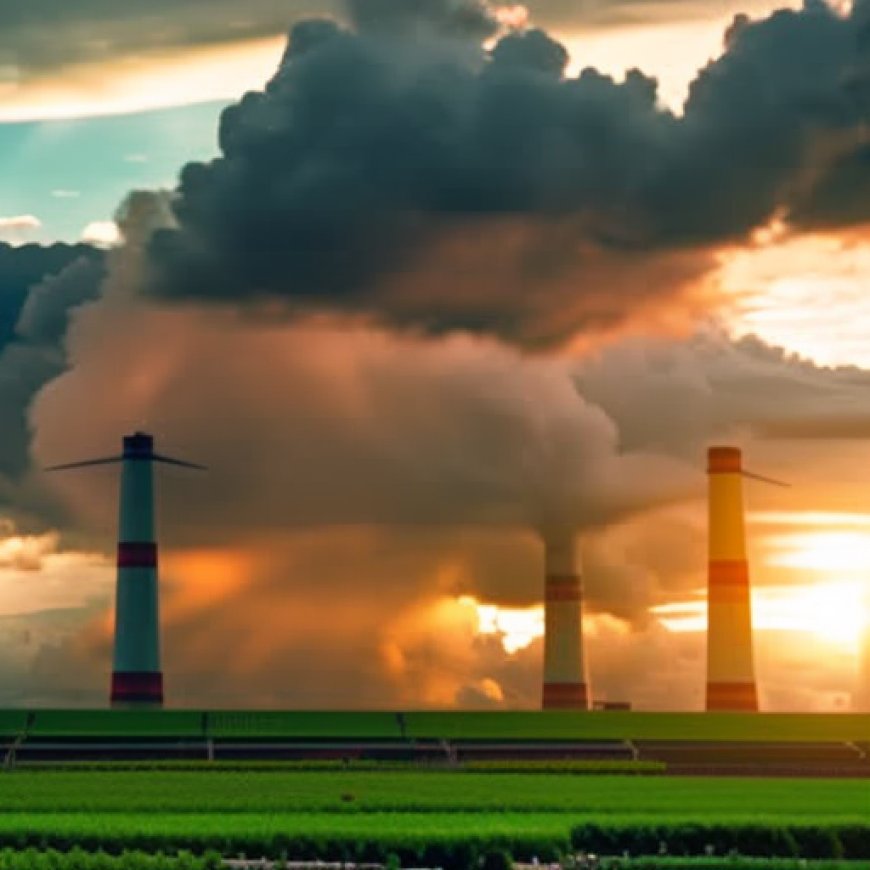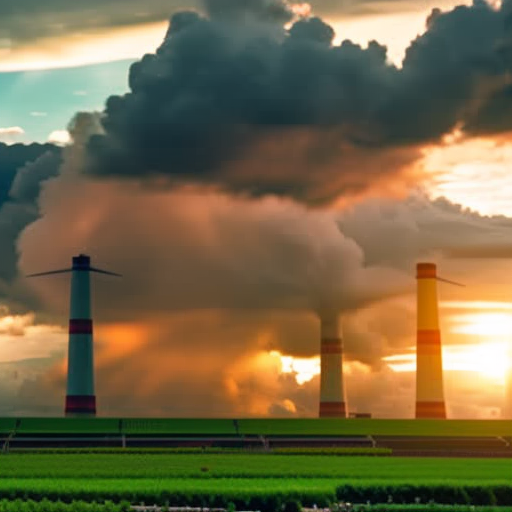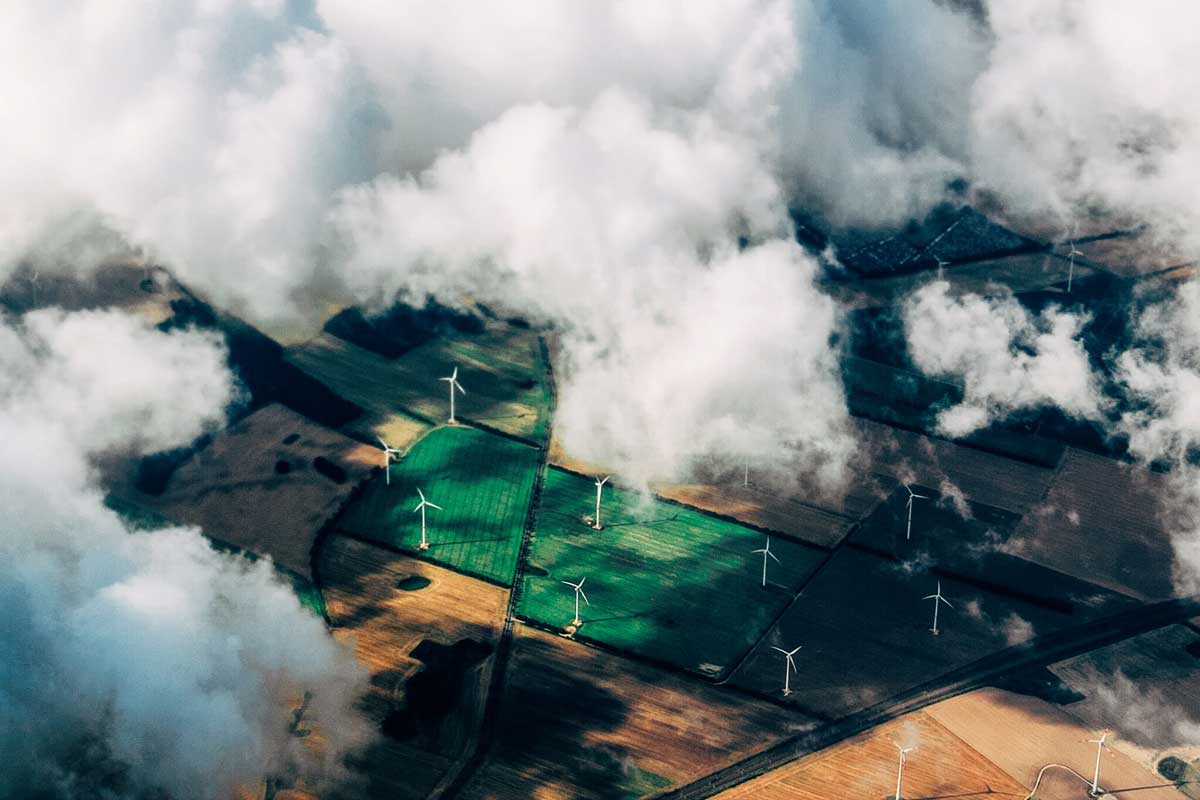Renewable Energy: Indonesia Needs a Sustainable and Resilient Approach
Renewable Energy: Indonesia Needs a Sustainable and Resilient Approach Modern Diplomacy


Sustainable Development Goals and Renewable Energy in Indonesia

Renewable energy’s social and economic impact is unquestionably significant. Indonesia, as a fossil energy-producing country, plays a crucial role in absorbing labor and driving domestic economic growth. However, the country’s renewable energy strategy must not solely focus on mitigating climate change but also consider the socioeconomic consequences. To ensure a balanced approach, the government needs to explore a variety of energy choices that align with its economic policies. This article emphasizes the importance of sustainable development goals (SDGs) throughout the renewable energy sector in Indonesia.
Efforts to Align Renewable Energy Regulations
The government of Indonesia must strike a balance between renewable energy regulations and the economic sector. It is essential to promote long-term empowerment and resilience by developing renewable energy sources that do not undermine economic progress. For example, the development of biogas energy can establish a value chain of resilience and sustainability in the agriculture sector, supporting both economic growth and ecological sustainability. Biogas energy development has already been widely carried out by the private sector, particularly in Bali and West Nusa Tenggara.
Transition from Fossil Fuels to Renewable Energy
The transition program from fossil fuels to renewable energy must be evaluated using an effective framework to ensure it does not stifle economic growth. Encouragement for the usage and development of renewable energy should work in tandem with economic progress. European and East Asian countries have been leading the way in utilizing renewable energy sources such as solar panels, wind, and geothermal power. However, due to Indonesia’s diverse renewable energy resources, a strong analysis is required to identify the potential for effective development.
Promoting Sustainable Energy Sources
There are various possibilities for sustainable energy sources in Indonesia, including geothermal energy, solar panels, and biogas energy. Biogas, in particular, offers a sustainable energy solution that balances the economic and environmental sectors. It utilizes animal waste to produce organic fertilizer, which can be used in agriculture. Additionally, the development of biogas energy can help the Indonesian government reuse palm oil waste. Renewable energy policies based on sustainability and resilience not only aim for zero emissions but also zero poverty. These measures contribute to mitigating global climate change while ensuring food resilience.
Promoting Biogas Energy for Community Empowerment
The government and private sector must promote the growth of biogas energy, enabling small communities to contribute to improving energy resilience. This long-term alternative empowers communities, accelerates renewable energy growth, ensures economic resiliency, and encourages synergy between different sectors. By implementing this policy, Indonesia can become a clean and sustainable country that effectively addresses renewable energy, economic policy, and food resilience.
Biogas Development and Prosperity
Biogas development not only helps meet renewable energy requirements but also improves the balance and prosperity of fragile rural communities. It reduces energy expenditure, alleviates poverty, and reduces air pollution. The management of waste used to produce biogas improves energy access and creates new socioeconomic opportunities. Increased promotion and training in biogas technology will benefit villages and establish new economic value chains.
Environmental Benefits of Biogas Energy
Biogas serves as a renewable energy source, reducing greenhouse gases and other atmospheric emissions. It improves cleanliness, increases the production of high-quality organic fertilizers, and reduces the use of environmentally unfriendly fertilizers in the agricultural sector. Furthermore, it improves soil quality, making agricultural products more sustainable. Biogas energy promotes development synergy and dispels the myth that renewable energy policies lead to economic loss.
Expanding Socio-Cultural Applications
Socio-cultural applications can expand our understanding of how information exchange can begin in rural areas. This form of information distribution is taking place in numerous Indonesian locations and holds great promise. Areas such as Bali, West Nusa Tenggara, and Sulawesi have the potential for biogas development due to their agricultural and livestock sectors. Biogas can be a renewable energy source that promotes sustainability and resilience in the energy, economic, and food industries.
In conclusion, Indonesia has the opportunity to embrace renewable energy sources, particularly biogas, to achieve sustainable development goals. By promoting biogas energy, the country can address climate change, improve economic growth, and ensure food resilience. It is crucial for the government and private sector to collaborate in developing renewable energy solutions that benefit both society and the environment.
SDGs, Targets, and Indicators
| SDGs | Targets | Indicators |
|---|---|---|
| SDG 7: Affordable and Clean Energy | 7.2: Increase the share of renewable energy in the global energy mix | – Percentage of renewable energy sources in Indonesia’s energy mix – Number of renewable energy development projects implemented |
| SDG 8: Decent Work and Economic Growth | 8.2: Achieve higher levels of economic productivity through diversification, technological upgrading, and innovation | – Number of renewable energy projects that contribute to economic growth – Employment generated by renewable energy sector |
| SDG 9: Industry, Innovation, and Infrastructure | 9.4: Upgrade infrastructure and retrofit industries to make them sustainable, with increased resource-use efficiency and greater adoption of clean and environmentally sound technologies and industrial processes | – Number of infrastructure upgrades and retrofits for renewable energy – Adoption rate of clean technologies in industries |
| SDG 13: Climate Action | 13.2: Integrate climate change measures into national policies, strategies, and planning | – Number of renewable energy policies that consider climate change mitigation – Integration of climate change measures in national energy plans |
| SDG 15: Life on Land | 15.3: Combat desertification, restore degraded land, and soil, including land affected by desertification, drought, and floods | – Number of biogas projects that contribute to land restoration – Area of degraded land restored through biogas energy development |
1. Which SDGs are addressed or connected to the issues highlighted in the article?
SDG 7: Affordable and Clean Energy
The article discusses the importance of renewable energy development in Indonesia and the need to balance energy and economic policies. It emphasizes the significance of renewable energy in mitigating climate change and achieving sustainability.
SDG 8: Decent Work and Economic Growth
The article highlights the economic impact of renewable energy development and the potential for job creation in the sector. It emphasizes the need to promote long-term empowerment and resilience through renewable energy that supports economic progress.
SDG 9: Industry, Innovation, and Infrastructure
The article mentions the importance of upgrading infrastructure and adopting clean technologies for sustainable renewable energy development. It emphasizes the need to integrate renewable energy into existing industries and promote technological innovation.
SDG 13: Climate Action
The article discusses the need to align renewable energy policies with climate change mitigation efforts. It emphasizes the importance of integrating climate change measures into national policies and strategies.
SDG 15: Life on Land
The article highlights the environmental benefits of biogas energy, including improved soil quality and land restoration. It emphasizes the potential of biogas energy to combat desertification and restore degraded land.
2. What specific targets under those SDGs can be identified based on the article’s content?
– Target 7.2: Increase the share of renewable energy in the global energy mix
– Target 8.2: Achieve higher levels of economic productivity through diversification, technological upgrading, and innovation
– Target 9.4: Upgrade infrastructure and retrofit industries to make them sustainable, with increased resource-use efficiency and greater adoption of clean and environmentally sound technologies and industrial processes
– Target 13.2: Integrate climate change measures into national policies, strategies, and planning
– Target 15.3: Combat desertification, restore degraded land, and soil, including land affected by desertification, drought, and floods
3. Are there any indicators mentioned or implied in the article that can be used to measure progress towards the identified targets?
– Percentage of renewable energy sources in Indonesia’s energy mix
– Number of renewable energy development projects implemented
– Number of renewable energy projects that contribute to economic growth
– Employment generated by the renewable energy sector
– Number of infrastructure upgrades and retrofits for renewable energy
– Adoption rate of clean technologies in industries
– Number of renewable energy policies that consider climate change mitigation
– Integration of climate change measures in national energy plans
– Number of biogas projects that contribute to land restoration
– Area of degraded land restored through biogas energy development
These indicators can be used to measure progress towards the identified targets by tracking the implementation and impact of renewable energy projects, assessing the integration of renewable energy into existing industries and infrastructure, monitoring the adoption of clean technologies, and evaluating the contribution of biogas energy to land restoration and soil improvement.
4. Table: SDGs, Targets, and Indicators
| SDGs | Targets | Indicators |
|---|---|---|
| SDG 7: Affordable and Clean Energy | 7.2: Increase the share of renewable energy in the global energy mix | – Percentage of renewable energy sources in Indonesia’s energy mix – Number of renewable energy development projects implemented |
| SDG 8: Decent Work and Economic Growth | 8.2: Achieve higher levels of economic productivity through diversification, technological upgrading, and innovation | – Number of renewable energy projects that contribute to economic growth – Employment generated by the renewable energy sector |
| SDG 9: Industry, Innovation, and Infrastructure | 9.4: Upgrade infrastructure and retrofit industries to make them sustainable, with increased resource-use efficiency and greater adoption of clean and environmentally sound technologies and industrial processes | – Number of infrastructure upgrades and retrofits for renewable energy – Adoption rate of clean technologies in industries |
| SDG 13: Climate Action | 13.2: Integrate climate change measures into national policies, strategies, and planning | – Number of renewable energy policies that consider climate change mitigation – Integration of climate change measures in national energy plans |
| SDG 15: Life on Land | 15.3: Combat desertification, restore degraded land, and soil,
Behold! This splendid article springs forth from the wellspring of knowledge, shaped by a wondrous proprietary AI technology that delved into a vast ocean of data, illuminating the path towards the Sustainable Development Goals. Remember that all rights are reserved by SDG Investors LLC, empowering us to champion progress together. Source: moderndiplomacy.eu
Join us, as fellow seekers of change, on a transformative journey at https://sdgtalks.ai/welcome, where you can become a member and actively contribute to shaping a brighter future.
|








